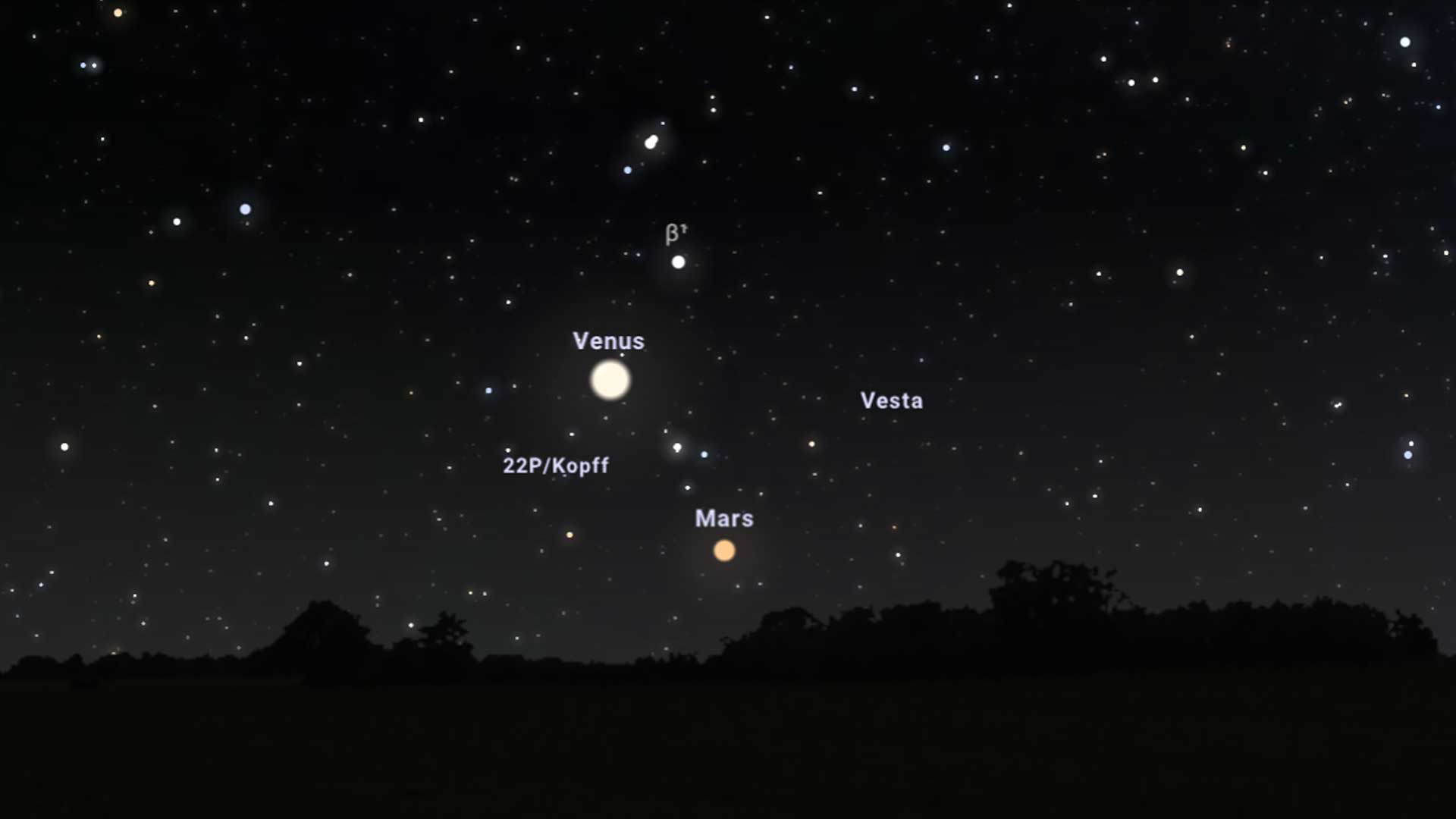See Venus and Mars pair up in the early morning sky Saturday
Here’s how to catch Venus and Mars dancing together in the sky this Saturday (March 12)

Venus will meet up with Mars in the very early morning sky on Saturday (March 12) — here's how you can catch the planetary duo.
The two planets will appear close to each other in the south-eastern sky as they reach conjunction, meaning they will share the same right ascension or celestial longitude. The pair will be visible at dawn, rising around 4:20 a.m. EST (0920 GMT), nearly two hours before sunrise, according to In-The-Sky.org.
Skywatchers in the northeast will have to wake up early to catch the Venus-Mars conjunction. The pair will rise to an altitude of 12 degrees above the south-eastern horizon. However, the planets will quickly fade from view as the dawn breaks around 5:51 a.m. EST (1051 GMT).
Related: Night sky, March 2022: What you can see this month
Venus returned to the early morning sky in February, taking its place as the dazzling "morning star." Therefore, the planet will be easy to spot, appearing about 200 times brighter than its companion, Mars. Venus will have a magnitude of -4.5, while Mars will have a magnitude of 1.2. You'll be able to spot the Red Planet by looking slightly southeast of Venus.
Located in the constellation Capricornus, the two planets will be only about four degrees apart. While they'll be too widely separated to fit within the field of view of a telescope, the planets will be visible to the naked eye or through a pair of binoculars when looking to the southeast before sunrise.
Our guides for the best telescopes and best binoculars can help find the right instrument for you for the next skywatching event. If you're hoping to snap photos of the planets, here's our guides for the best cameras for astrophotography and best lenses for astrophotography.
Get the Space.com Newsletter
Breaking space news, the latest updates on rocket launches, skywatching events and more!
Saturn will join Venus and Mars later this month in the morning sky, beginning March 18. Skywatchers can track the ringed planet steadily moving toward Mars and Venus a few days prior, as the trio will be visible low in the east before sunrise.
Editor's note: If you have an amazing night sky photo or video that you'd like to share for a possible story or image gallery, let us know! You can send in images and comments to spacephotos@space.com.
Follow Samantha Mathewson @Sam_Ashley13. Follow us on Twitter @Spacedotcom and on Facebook.
Join our Space Forums to keep talking space on the latest missions, night sky and more! And if you have a news tip, correction or comment, let us know at: community@space.com.

Samantha Mathewson joined Space.com as an intern in the summer of 2016. She received a B.A. in Journalism and Environmental Science at the University of New Haven, in Connecticut. Previously, her work has been published in Nature World News. When not writing or reading about science, Samantha enjoys traveling to new places and taking photos! You can follow her on Twitter @Sam_Ashley13.








